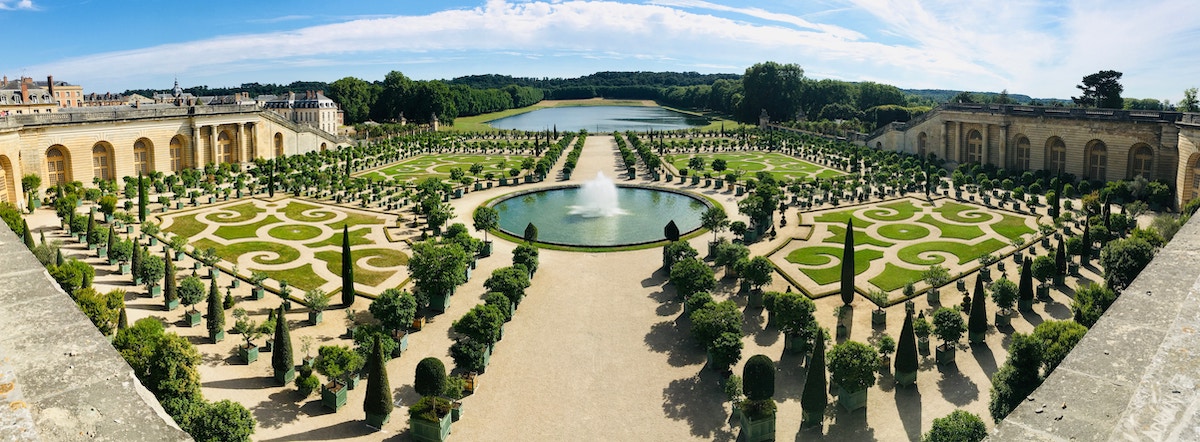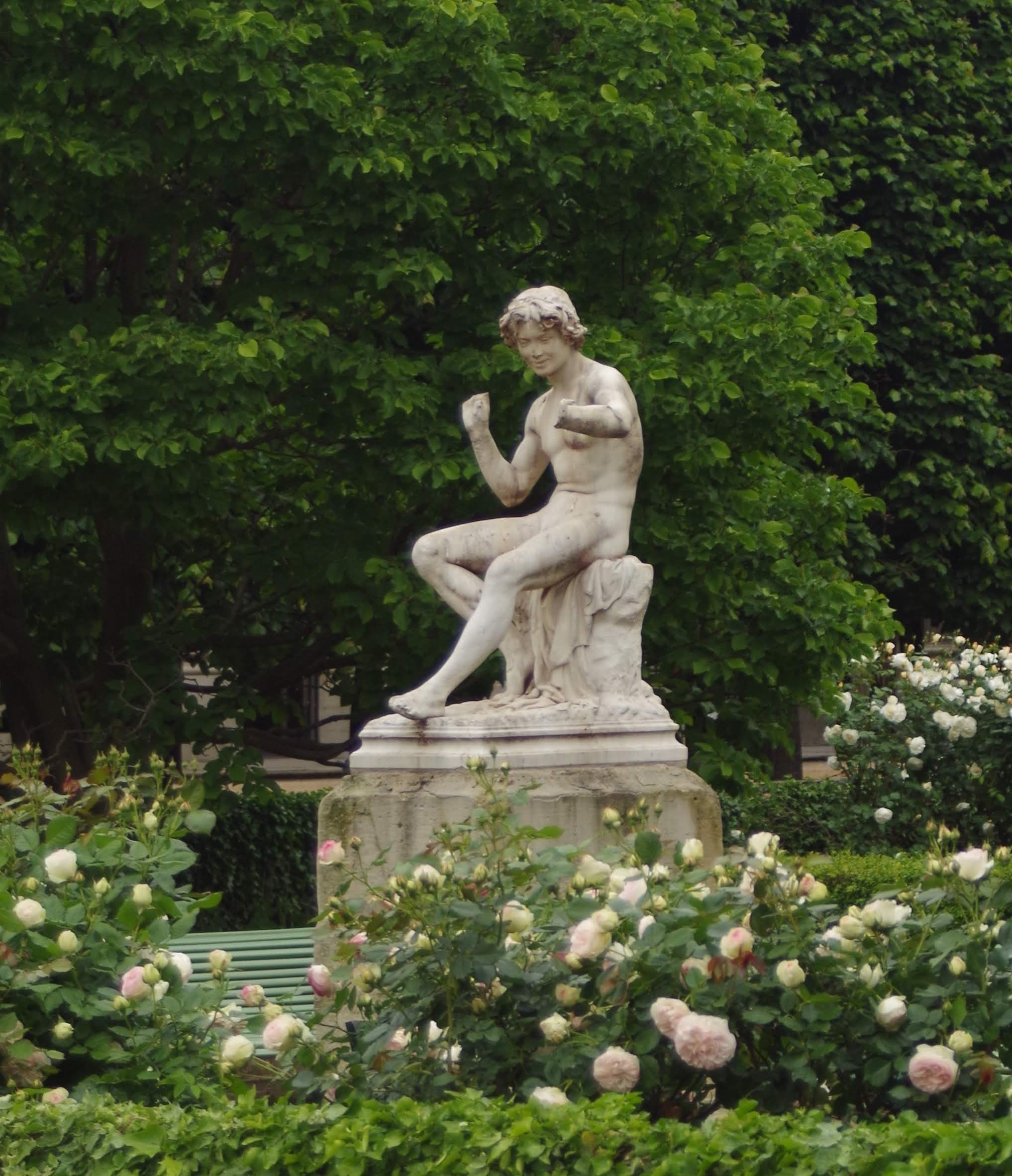The best part? This garden style isn't just for big spaces. Whether you have a back garden or a small patio, you can bring a bit of this classic style to your home.
In this article, we’ll take a look at the French garden style that’s known for its stonework, symmetry, beauty — and more.
Let’s get started.
What is the French Garden Style?
The French garden is all about order, symmetry, geometry, and cool colour palettes. It’s thoughtfully curated, where every plant, pathway, and design element has a purpose.
It's not wild like some gardens and instead is carefully planned to look perfect and balanced. Think of it as a place where nature meets art — with a structured approach. Well-known examples of French gardens include the gardens at the Palace of Versailles (pictured above) and Chateau de Villandry.
Having a French garden-style garden can be a labour-intensive project that requires a lot of regular maintenance and upkeep.
How to Implement a French Garden Style
1. Choose The Right Furniture
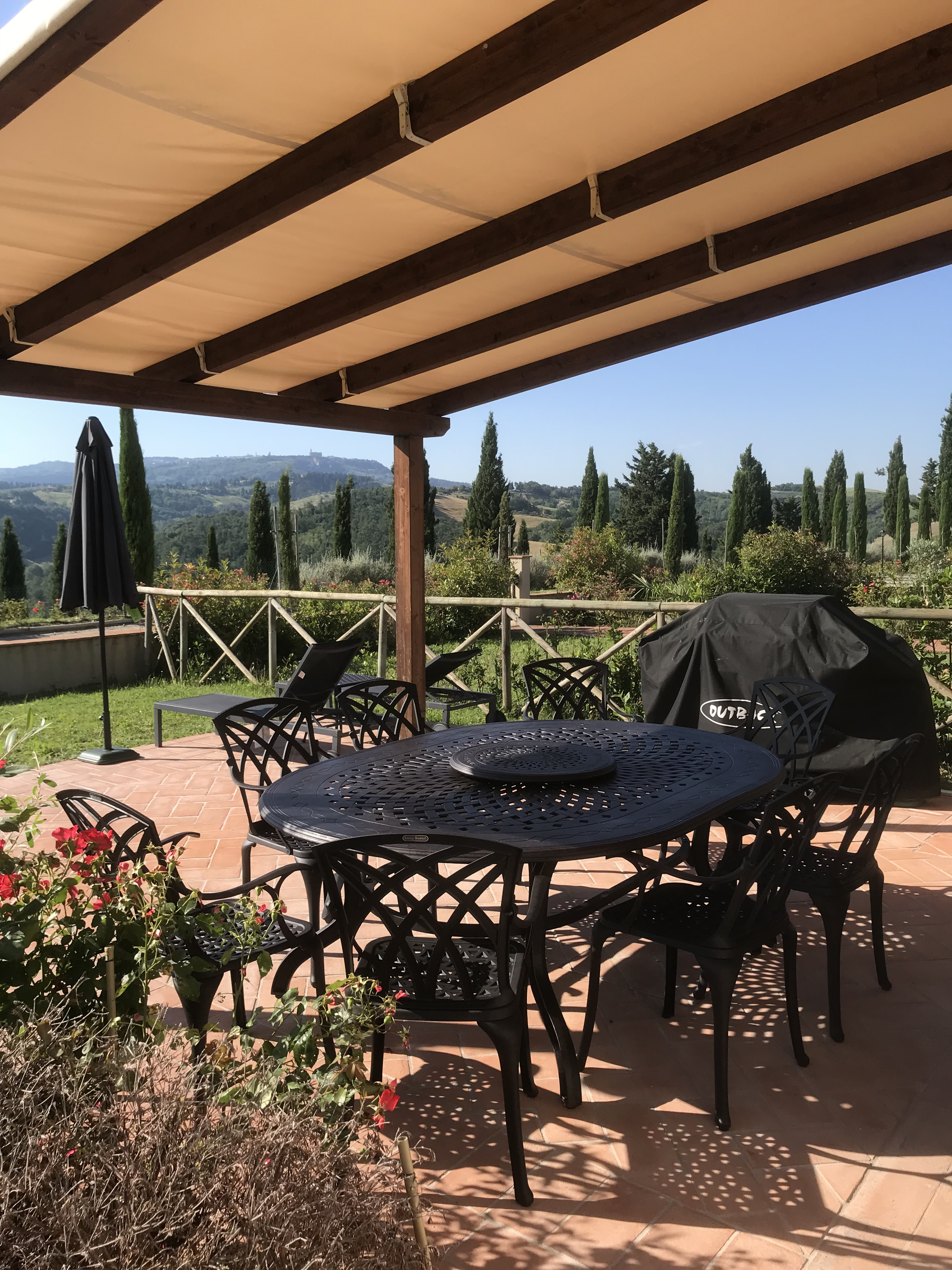
At Lazy Susan, we hand make and sell high-grade cast aluminium furniture known for its durability and ability to withstand any weather condition.
It comes in numerous designs and can look as romantic as you want it to in your French garden.
Other outdoor furniture options for a French garden style for you to consider include wrought iron and marble furniture.
2. Add Plants
Including plants that are native to France will give your garden an authentic touch. Climbing plants are a particular favourite among French-style gardens, and include:
-
Roses
Perhaps the most iconic of all climbing plants, climbing roses bring romance to any French garden. Varieties like 'New Dawn' or 'Climbing Cecile Brunner' offer fragrant blooms and can be trained to ascend trellises or walls.
-
Wisteria
With its cascading clusters of purple or white flowers, wisteria is a showstopper. But it's not just about the blooms — the scent of wisteria can transform your garden into a fragrant paradise.
-
Honeysuckle
This twining plant is not only visually appealing with its tubular flowers but also attracts pollinators, adding life and movement to your garden.
Don’t forget to plant some decorative trees, too, like beech trees, which are the second most common tree species that can be found in France.
3. Stone Features
Stone features can be found in quaint English country gardens as much as they can in modern-day French gardens.
Let’s take a look at three examples of stone elements you can use:
-
Stone walls
Stone walls can be both functional and decorative in a French-style garden. They provide structure and can create separate garden "rooms".
-
Statues
A quintessential feature, statues bring art and history to the garden — adding depth and intrigue, inviting visitors to stop and enjoy their surroundings while at your home.
-
Columns and pillars
Columns and pillars in a French Garden can serve as standalone features or support structures for pergolas and archways — adding a touch of classical elegance.
Be Geometrical
As we noted earlier, French gardens are known for their geometry. Don’t worry if maths isn’t your forte (or if you think your garden is too small), you can still add geometry.
If you have hedges, make sure to clip them to different geometric shapes, like pyramids and spheres. Naturally, you’ll want to take some time to think about the shapes you want to create so that they actually look good in your garden.
Use Symmetry
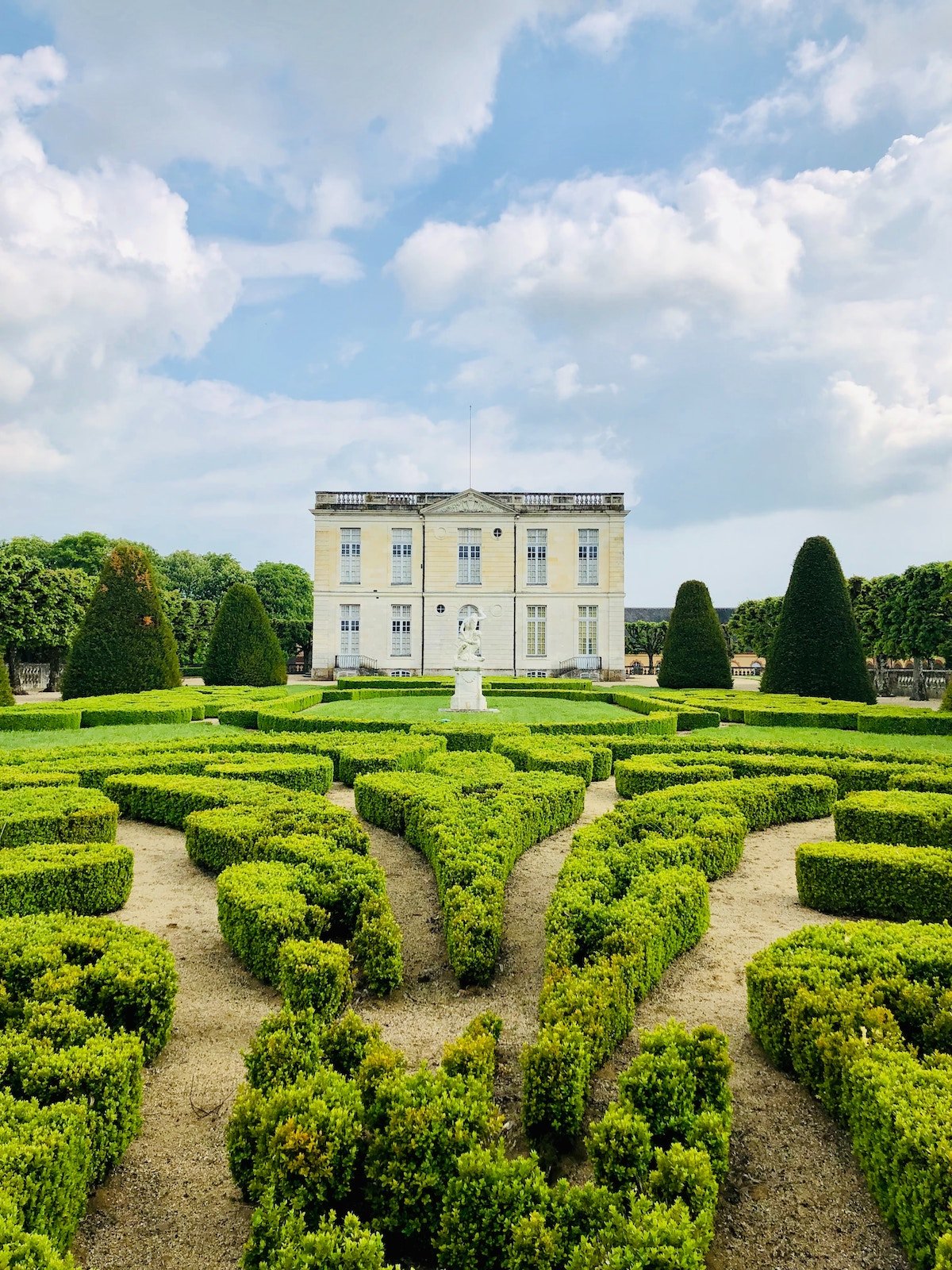
As we also noted earlier, French gardens have plenty of symmetry — which is something you can easily adopt when it comes to your own garden. But what is symmetrical landscaping?
Essentially, creating symmetry in your garden is about mirroring plants and objects from one side to the other.
A good way to start is to take two identical objects, such as benches, and place them facing each other on opposite sides of a garden path. Or placing hanging baskets at either side of your door.
Add a Focal Point
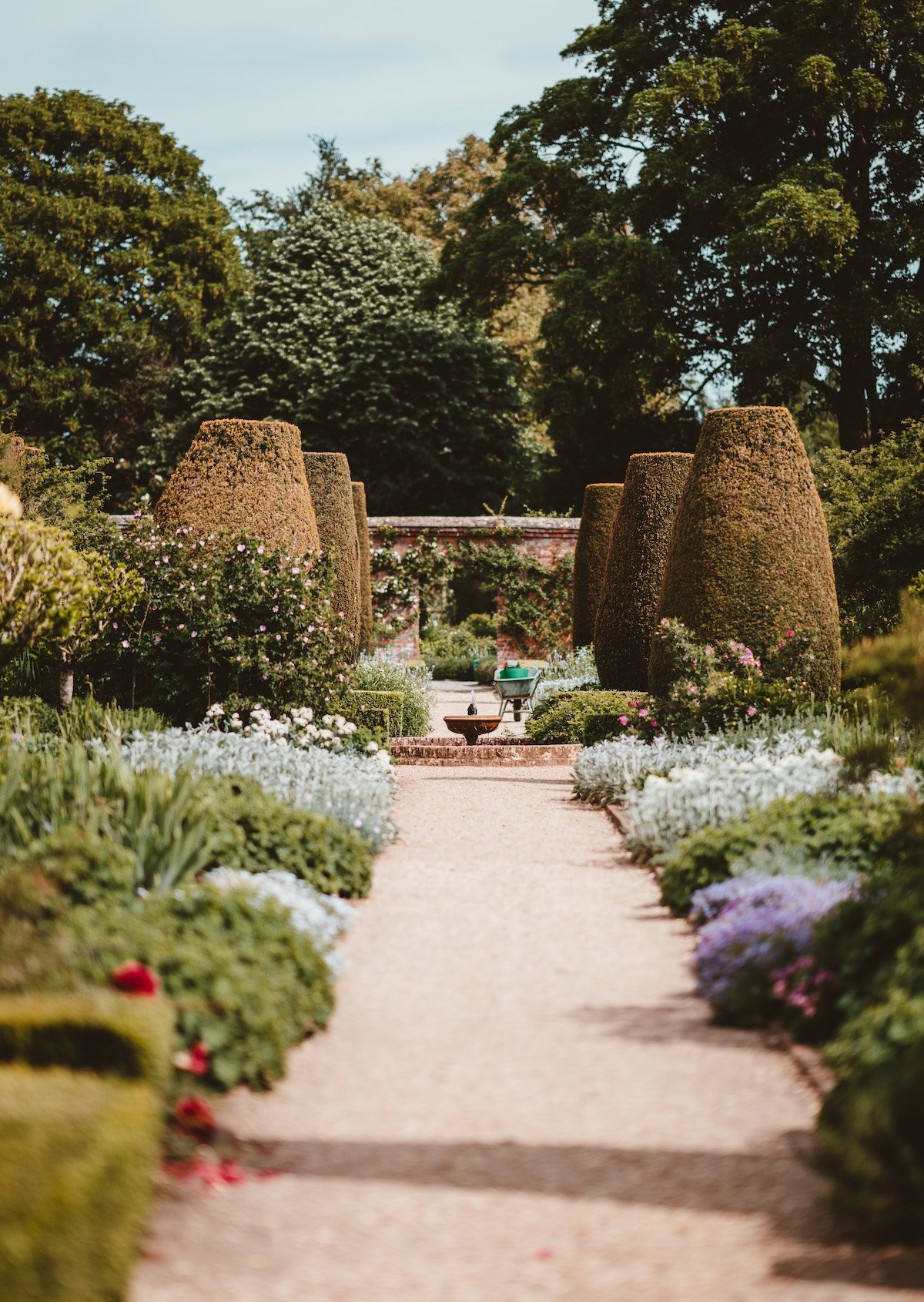
It’s really important that you add a focal point to your garden, no matter how small it is, to ensure it has a French garden style. Indeed, some of the best French gardens have a focal point.
We suggest placing an elegant element like a sculpture. In the photo above it is the fountain/water feature that draws the eye down the pathway.
Final Thoughts
When it comes to the French garden style, stick to a cool colour palette, go for symmetry (while balancing creativity and inspiration), and make sure your focal point stands out.
Additionally, find the best high-quality aluminium furniture for a French-styled garden by having a browse through our products here at Lazy Susan.




